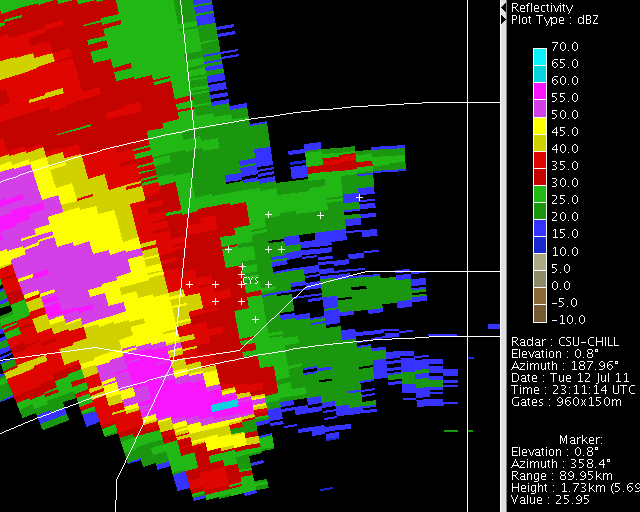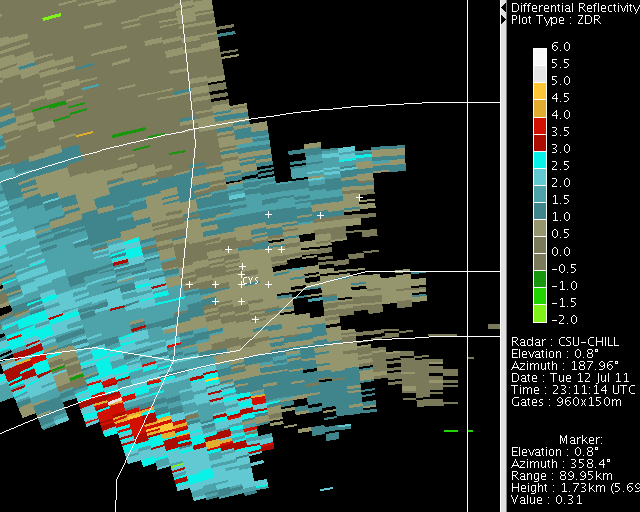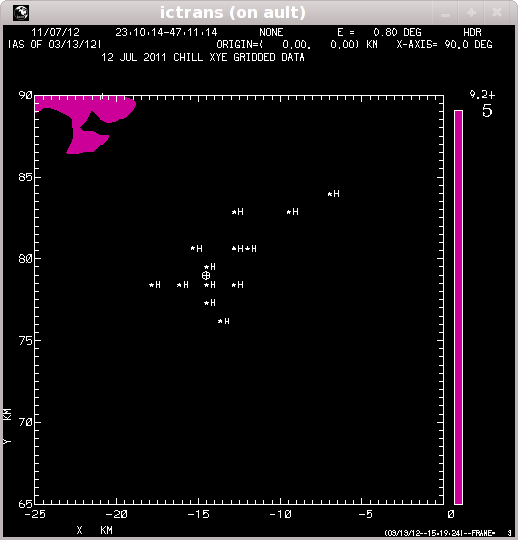Damaging hailstorm at Cheyenne, WY: 12 July 2011
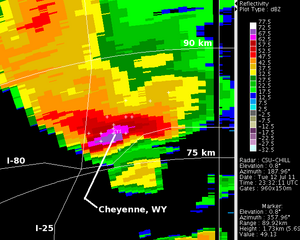
CSU-CHILL reflectivity data collected in a low elevation angle PPI sweep through a hailstorm that affected Cheyenne, Wyoming on 12 July, 2011. (Plus symbols mark reports of 1 inch or larger diameter hail). Plots of several dual-polarization data fields observed in this storm have been prepared.
Introduction
During the month of July, 2011 the large scale monsoon circulation significantly increased the mean tropospheric water vapor content in the Colorado - Wyoming area. At an early point in this monsoon flow period, a severe thunderstorm that produced widespread hail damage and localized flooding struck the city of Cheyenne Wyoming on 12 July. While this event took place, the CSU-CHILL radar scanning was primarily focused on additional convective precipitation falling over the foothills of Boulder County. Single elevation 360 degree PPI scans were also being done at ~5.5 minute intervals. The data plots shown in this article were developed from these 0.8 degree elevation surveillance scans. The following figure identifies some VCHILL base map features in the Cheyenne (CYS) area. The plus symbols mark locations of the 21 hail reports in the Storm Prediction Center files that were associated with this event. Hailstone diameters up to 1.75 inches were reported along with several instances of roof and window damage. (Since individual spotters sometime filed more than one report from a single location, fewer than 21 report locations are shown.)
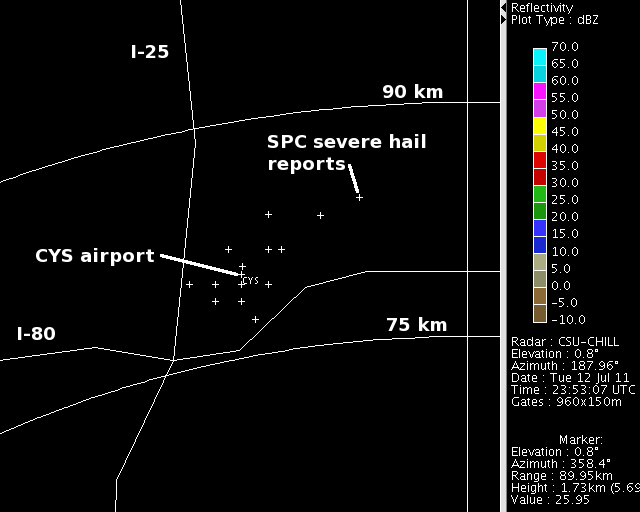
Reflectivity loop
The primary echo core crossed the city while moving from the south-southwest. Due to the large backscattering cross sections of the hailstones, reflectivity levels reached ~65 dBZ.
|
|
||
|
Differential reflectivity loop
The presence of many quasi-spherical, tumbling hailstones essentially equalized the co-polar signal levels received at horizontal and vertical polarizations. Since differential reflectivity () is based on the logarithm of the (H/V) received power ratio, decreased to ~0 dB in much of the high reflectivity core area. In some sweeps, negative values (V power > H power) occurred. Negative values have been observed in other instances of large hail (Balakrishnan and Zrnic, JAS 1990 p1525 - 1540.)
|
|
||
|
Hail differential reflectivity () loop
Aydin et al (JAM 1986, p1475-1484) developed the Hail Differential Reflectivity parameter () to exploit the high reflectivity / low combination that distinguishes hail echoes from those due oblate raindrops. Positive Hdr values are associated with the existence of hail. The following loop shows that distinctly positive values swept across most of the SPC hail report locations.
|
|
||
|
Cross-Correlation and Linear Depolarization Ratio Data
The following four panel plot was generated using the NCAR SOLO program. Reflectivity and are shown in the upper two panels; reflectivity maximized at approximately the time of this sweep. The irregular boundary encloses the high reflectivity / low hail area. The correlation between the co-polar H and V received signals () and the Linear Depolarization Ratio (Ldr) data are shown in the lower two panels. (Here Ldr is given by the magnitude of the V-polarized return received after an H-polarized transmission compared to the magnitude of the co-polar H return). Pulse volumes within the irregular boundary contain a variable mixture of raindrops and hailstones. This variety of hydrometeor shapes, sizes, and orientation angles tends to locally lower to values of ~0.94 to 0.90 in much of the hail area (Balakrishnan and Zrnic, JAS 1990 p1525 - 1540.) The gyrating motions of the hailstones also enhance their ability to shift some of the incident H radiation into the V (cross-polar) plane in the back-scattered signal (Herzegh and Jameson, BAMS 1992, p1365-1374). This increased cross-polar signal component caused the largest Ldr values (-20 to -15 dB) to occur in the hail region.
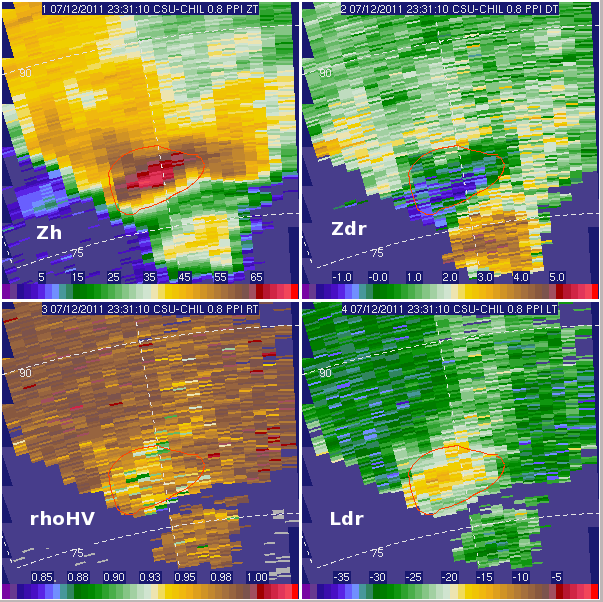
References
- N. Balakrishnan, D. S. Zrnic, 1990: Use of Polarization to Characterize Precipitation and Discriminate Large Hail. J. Atmos. Sci., 47, 1525–1540.
- Aydin, K., T. A. Seliga, V. Balaji, 1986: Remote Sensing of Hail with a Dual Linear Polarization Radar. J. Climate Appl. Meteor., 25, 1475–1484.
- Herzegh, Paul H., Arthur R. Jameson, 1992: Observing Precipitation through Dual-Polarization Radar Measurements. Bull. Amer. Meteor. Soc., 73, 1365–1374.
